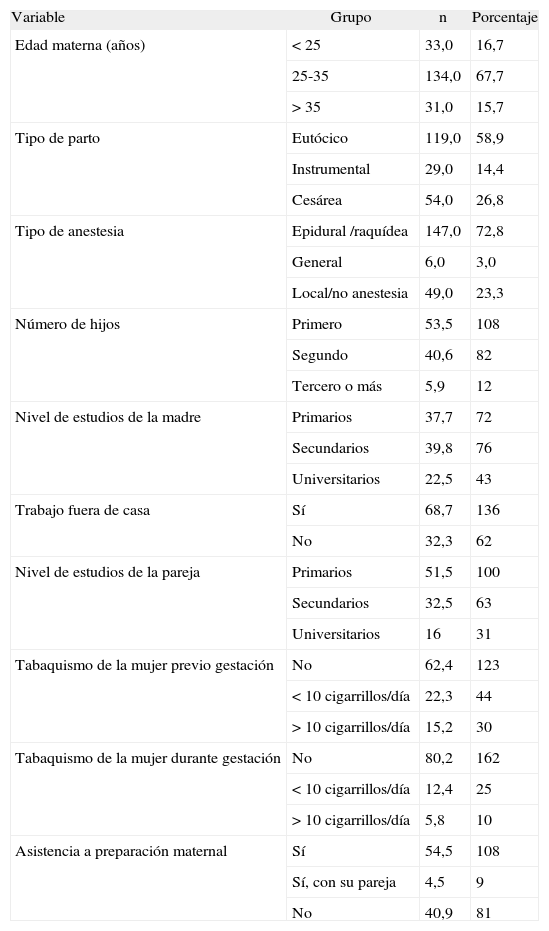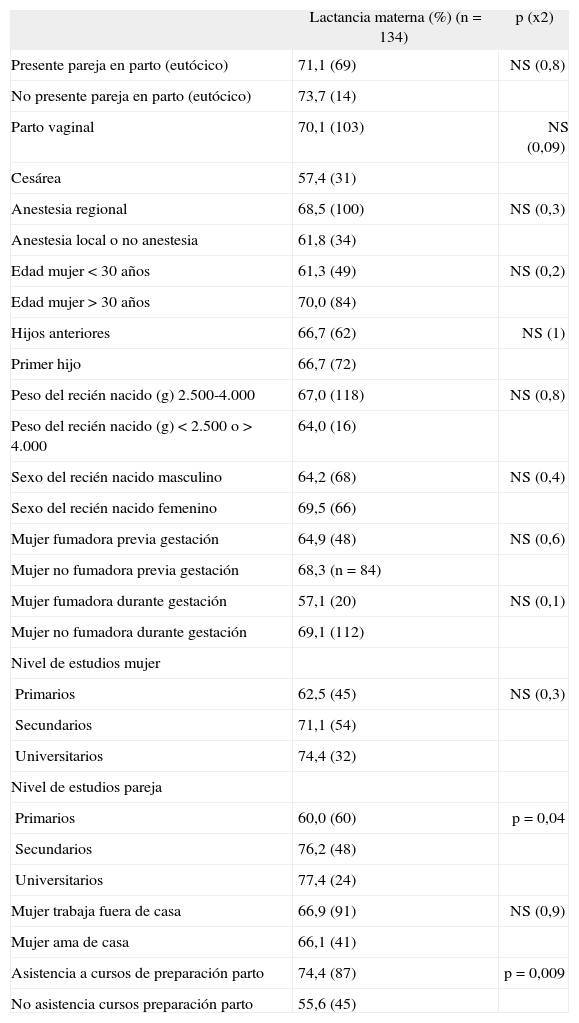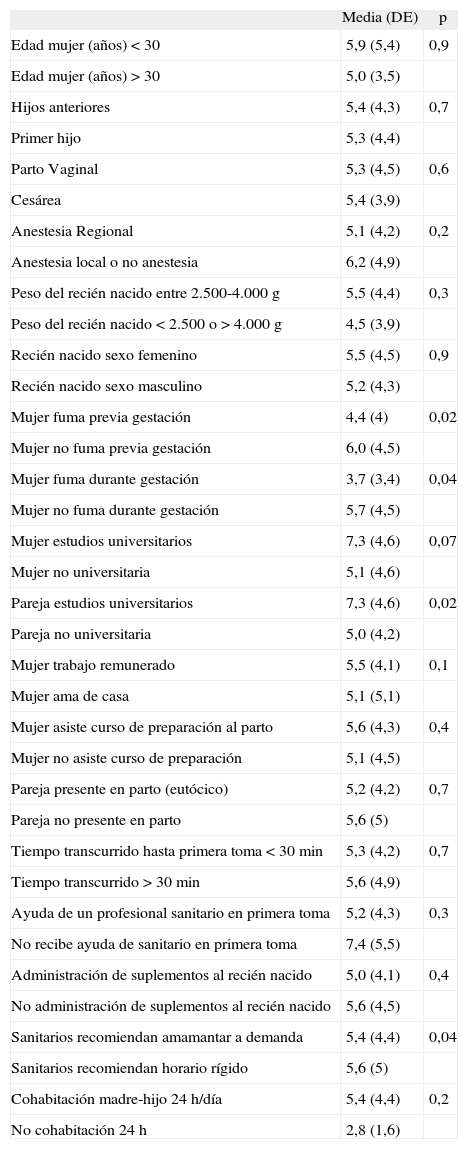Conocer la prevalencia de la lactancia materna (LM) en el área de salud del Hospital del Salnés (Vilagarcía, Pontevedra), así como factores sociosanitarios asociados a su inicio y duración. Conocer el grado de cumplimiento del decálogo de la Iniciativa de Hospital Amigo de los Niños (IHAN).
MétodoLa población del estudio son mujeres que tuvieron un hijo en el Hospital del Salnés entre agosto de 2004 y septiembre de 2005, a las que se les pasó una encuesta al alta. Se realizó un estudio prospectivo mediante encuesta telefónica a los 4, 6 y 12 meses. Se utilizó SPSS para Windows 13.0. El estudio estadístico de las variables se realizó empleando la prueba de la t de Student, el test de Mann-Whitney, y la χ2.
ResultadosEl 66,3 % (134) de los niños recibía LM exclusiva al alta. A los 6 meses seguía el 23,7% (31) y a los 12 el 10,2% (13). Influyen en el inicio de la LM el nivel de estudios de la pareja y que la mujer asista a clases de preparación maternal. En el mantenimiento influyen el tabaquismo de la mujer, el nivel de estudios de la pareja y que el niño lacte a demanda.
ConclusionesEl grado de cumplimiento del decálogo de la IHAN es bastante satisfactorio, pero no la prevalencia de LM, que debería aumentar. El padre debe incorporarse a la labor educativa prenatal.
To determine the prevalence of breastfeeding in the health area of Salnés Hospital (Vilagarcía, Pontevedra, Spain) and the influence of social and healthcare factors on the initiation and duration of breastfeeding. To evaluate compliance with each of the BFHI (Baby Friendly Hospital Initiative) “Ten Steps to Successful Breastfeeding” defined by the WHO/UNICEF.
MethodThe study population included all the women who gave birth in Salnés Hospital between august 2004 and september 2005. All the women were administered a questionnaire before discharge. A prospective study was performed by telephone interviews at 4, 6 and 12 months postpartum. A database was created using SPSS 13.0 for Windows. Statistical analysis was performed using Student's t-test and the Mann-Whitney non-parametric test for quantitative variables, and the Chi-square test for categorical variables.
ResultsAt discharge, 66.3% (134) of newborns were exclusively breastfed. At 6 months postpartum, 23.7% (31) of the women continued exclusive breastfeeding, and 10.2% (13) continued at 12 months. Factors with a significant effect on breastfeeding initiation were the partner's educational level and women's attendance at prenatal classes. Factors with a positive effect on maintaining breastfeeding were maternal non-smoking, a partner with tertiary education and the recommendation of on-demand breastfeeding by the healthcare provider.
ConclusionsCompliance with the BFHI “Ten Steps to Successful Breastfeeding” was fairly satisfactory, but the prevalence of breastfeeding should be higher. The father should be included in prenatal education.
Artículo
Comprando el artículo el PDF del mismo podrá ser descargado
Precio 19,34 €
Comprar ahora










